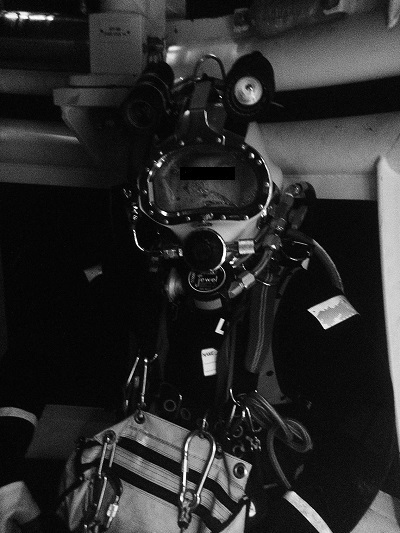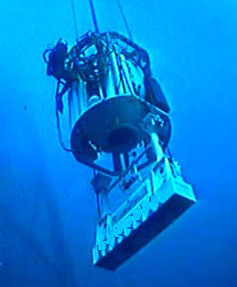Commercial Diver Lives to Tell the Tale
A commercial diver living in Australia has revealed the horrific crushing accident he suffered 330 feet (100 meters) below the surface whilst working in the Gulf of Thailand.
The diver, who wishes to remain anonymous, has recounted events to MarEx:

The diver was on his knees facing the seabed when the load was lowered by crane, and it made contact across his back where his emergency air supply was located.
He was forced down into the mud of the seafloor. His head was forced back, and his helmet was danger of being pulled off his head. He tried to “headbutt” the helmet on while constantly being forced deeper in the mud.
The action caused trauma to the muscles and discs in his spine. His right leg was forced sideways, causing a torn knee ligament, and his arms were forced apart. Although he attempted to close his arms back to his chest, the mud was too firm, and both shoulders were dislocated.
With his arms dislocated and behind him, his chest bore the full surface area of the seabed. He held his breath and flexed as hard as possible, but his lower cartilage ribs were fractured and the cartilage between his ribs and sternum broken.
He felt the need to speak to the supervisor to “politely” ask him to remove the load. However, whenever he attempted to speak, gas was forced from his lungs, causing further compression to his chest cavity.
He was compressed beneath the load for approximately 10 seconds before the crane was able to lift it.
The diver working with him pulled him from the mud via the umbilical line that connected him to the dive bell, his only means of returning to the surface.
At this point the diver was still conscious (“only just holding on”) with visual problems, mobility problems and breathing difficulties.
The diving bell clump weight was lowered to the seabed, and his companion carried him 30 meters from the accident site so that he could be positioned on to it. The clump was then raised to the diving bell.

The supporting diver assisted him on to his side so he could be floated up into the bell, right arm first with his elbow retracted. The diver used his left (uninjured) leg to hold himself in the bell by standing on the valve guard on the outer bottom door.
His head was still underwater in the partially-flooded bell. As the bellman pressurized the bell, forcing the water out, the diver had to bear the weight of his helmet in air. He was unable to do so without extreme pain, so the bell was re-flooded.
As he was still wearing his helmet, a cervical collar could not be fitted. Instead, the bellman’s towel was rolled up and used to support his head. The bell was then pressurized until the water level was at just above shoulder height. His helmet was then carefully removed.
Again, the bellman attempted to fill the bell with air. Again, it had to be reflooded because the diver experienced severe pain until his right, still dislocated, arm was supported using a rope.
The bell was finally raised to the ship, and towels were used to make a stretcher. Due to the extent of the diver’s spinal injuries, and right arm still sticking out unable to be splinted, he could not be maneuvered through the cramped conditions of the dive bell’s doors without causing extreme pain.
Morphine was administered, and his memory is clouded as the vessel’s medics attempted to relocate his right shoulder. After about an hour of unsuccessful attempts, he was transferred to another chamber so he could be decompressed, a process that takes several days, ready to be taken to the ship’s hospital.
“Six doors and two tight corners - ‘very’ difficult and painful”
He was made as comfortable as possible in a bunk with pillows, blankets and more morphine. Pain relief was constantly administered throughout decompression, firstly through intramuscular injection in the arm, until it was too bruised, then through the buttocks.
Upon completion of decompression, the casualty was assisted from his bunk and out of the diving system, where he was able to stand on his uninjured leg if holding onto something for support. He was assisted to the vessel’s hospital, where his arm was finally relocated.
After a 24-hour bend watch, in case he should suffer decompression sickness, he was evacuated by helicopter and transported via ambulance to hospital.
Both shoulders have since been reconstructed, and he has undertaken a full year of physio and occupational therapy before returning to full duties as a diver. He still experiences psychological trauma involving nightmares and flashbacks.
The opinions expressed herein are the author's and not necessarily those of The Maritime Executive.
